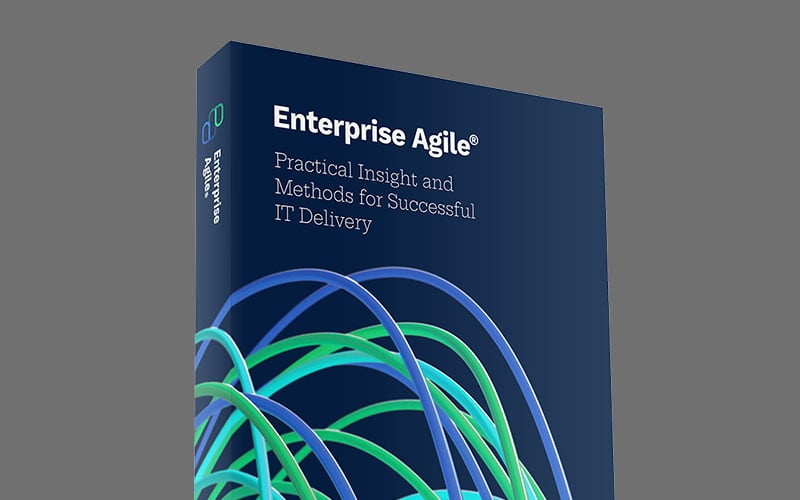Unlocking Successful IT Delivery: Practical Insight And Methods
Enterprise Agile® is an Agile project management approach tailored to tackle challenges faced by large organisations. The latest edition provides practical guidance for enterprise-level organisations wanting to embrace new working methods and technologies that are proven to increase agility while remaining efficient and avoiding significant risk.

The Enterprise Agile® Book explores how you can:
- Uncover the best strategies for designing, delivering and maintaining enterprise-scale systems.
- Discover Agile software management and delivery practices for enterprise-level organisations and projects.
- Realise greater value through increased flexibility to meet user needs.
- Find out how to implement positive technology change and have success when running technology services.
Success stories
Re-Engineering Device Apps & Delivery Processes
“Enterprise Agile® provided us with a more efficient delivery process enabling us to confidently deploy changes across all Waitrose stores in a fraction of the time and with greatly improved quality.”
Charles Webb, Head of IT Delivery, Waitrose & Partners

Why Enterprise Agile®?
Backed by decades of real-world experience, Enterprise Agile® is the only methodology aligning Agile software delivery processes with the challenges faced by larger organisations. With a failure rate of 23% across large Agile projects, Enterprise Agile® offers practical guidance based on insights of how to use enterprise-level Agile project management to overcome hurdles and deliver results.
Enterprise Agile® is based on 30 years’ experience from BJSS in delivering and supporting business critical systems in demanding public and private sector environments. The Enterprise Agile® project management methodology evolves to remain relevant, as changing global pressures and technologies redefine the way organisations operate. This updated edition includes a new chapter on how enterprise-level organisations can drive value through data-led programmes.
Success stories
Launching an Agile Tandem Bank
“With Enterprise Agile®, Tandem moved from a limited view two-week scrum cycle to a quarterly plan backed by an annual vision. Our release cadence improve from releases every few weeks to daily release cycles. The approach helped Tandem focus on what was important in order to get our business moving and deliver value for Tandem’s rapidly expanding customer numbers.”
Paul Clark, CTO, Tandem Bank

Enterprise Agile®: In Action
The Enterprise Agile®: In Action white paper series brings the insights and methods described in the BJSS Enterprise Agile® book to life. Learn how to apply key concepts and best practices from the approach to your organisation and become aware of the antipatterns to avoid.
Success stories
An Agile NHS Digital
“BJSS' award-winning Enterprise Agile® approach facilitated a rapid delivery, allowing for greater cost savings and reliability and removed vendor lock-in. While Enterprise Agile® contains the best features of Agile, it also focuses on risk measurement from the onset, thus facilitating a tailored delivery approach which complemented the project goals and ambitious timelines.”


